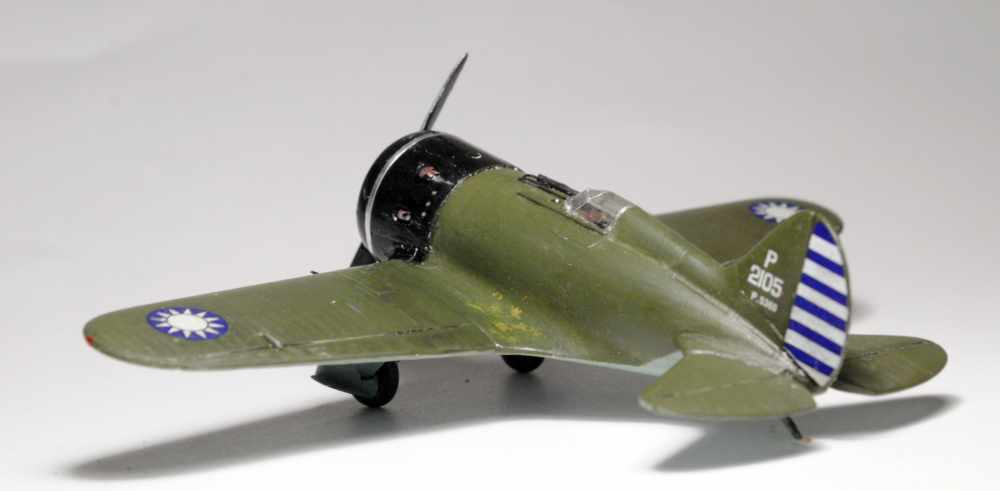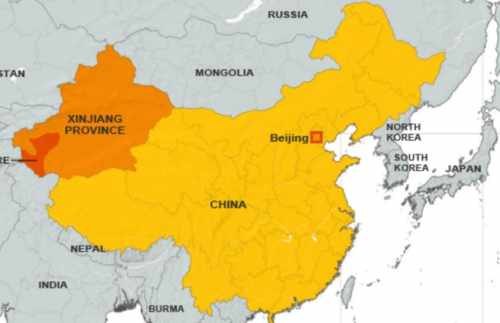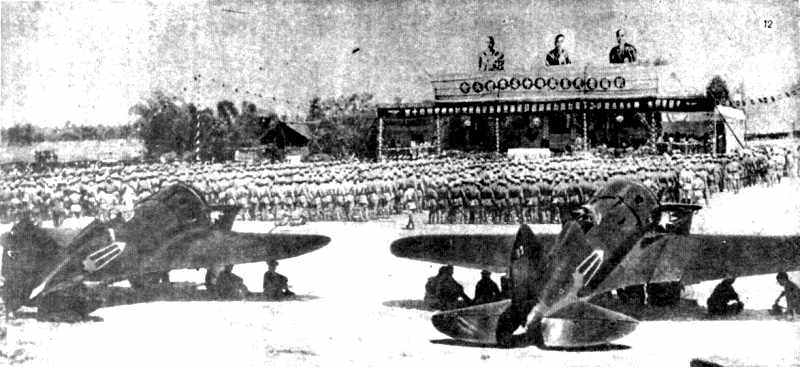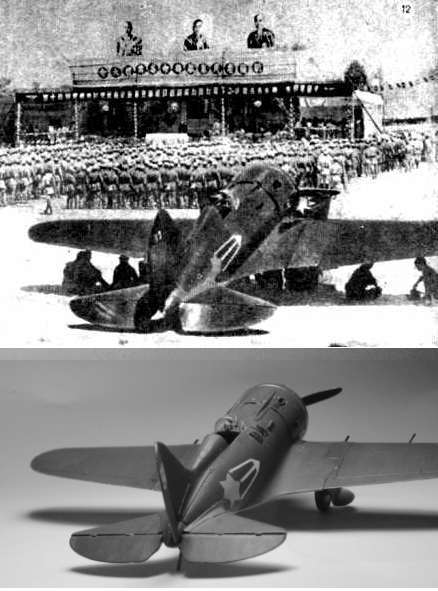Hi Everybody,
I have no certain answer to Stephane . However, for this plane, I used roundels on the extrados, as they are provided by Amodel for this plane, and more seriously because, at that time, March 1938, the majority of the photos of other chinese planes found in "A history of chinese aviation" by Lennart Anderson show roundels on extrados.

For the Xinjiang star, I think that it was yellow rather than red as I explained here , in french, in the building of my type 10:
Type 10and that I translate here:
Xinjiang, in Chinese 新疆; "New frontier". is the westernmost province of china, populated by various ethnic groups, predominantly Muslim, borders with Kazakhstan, Kyrgyzstan, Tajikistan, and to the north with Mongolia and Russia. These planes were therefore not intended to fight against the Japanese,

This province was only theoretically Chinese at that time. It was ruled by Sheng Shicai, a warlord, who founded on August 1, 1935 on 民众 反帝 联合会; "Anti-imperialist war front", completely subservient to the Soviet Communist Party.
The flag chosen by Sheng Shicai was a 6-pointed star evoking the 6 axes of his political program. It uses the colors of the Chinese Communist Party, a yellow symbol on a red background which has been preserved for the current flag of China.

The Soviets had already supplied R5 and U2 to create an air force that was used by Sheng Shicai to fight against the Uighur separatists and indirectly to protect the Soviet borders from the Kazakh, Tajiks or Kyrgyz rebels,
These I-16 served from 40 to 42 in a flight school that was part of a military academy created by Sheng Shicai for the benefit of the CCP. 25 students were to become the first Chinese Communist pilots, the pilots of the Chinese Air Force being for the moment all nationalists.
From 41, Soviet aid declined with the start of the GGP and early 42, Sheng Shicai thought that the USSR was going to be defeated. So he got closer to the Kuomintang and in the summer. 42, the academy was closed, the 160 CCP members, including all pilots arrested, and in a sign of allegiance 10 I-16 were handed over to the Nationalist Air Force.
Here are the photos of the ceremony.


A glance at these photos shows that the profiles and decals (Begemot, Kora, Eduard Bestfong are all wrong to varying degrees

The main error, repeated in many of the profiles and the Begemot and Kora decals, is the drawing. The star is badly oriented and the arrangement of the rays is asymmetrical.
The designers of Best fong and Edouard took the time to look at the photos since the drawing is exact.
Moreover, those of Eduard noticed that the color of the star is different from that of the rays, darker on one photo, lighter on the other. They didn't make the second mistake of making the drawing in white. Instead of doing a little historical investigation, however, they assumed there was a correlation between the Soviet Red Star and the Xinjiang Star and represent it in red. As stated above, this 6 points star is not related to the soviet 5 points star and I think that it had the same clor than on the flag, yellow.
For those who are interested in this episode of the History, I have taken the information from pages 18 to 21 of "Red Wings over the Yalu" by Xiaming Zhang. Although the title of this book refers to the Chinese pilots engaged in the Korean War, the entire first part is devoted to the early days of CCP aviation.
It can be downloaded here:
https://epdf.tips/red-wings-over-the-yalu-china-the-soviet-union-and-the-air-war-in-korea.html.
There is also a small paragraph on page 83 of "A History of Chinese Aviation" by Lennart Andersson
which speaks only of 2 I-16 provided by the USSR to the academy. But one can imagine that the other 8 I-16s had served in the Xinjiang Air Force.
Here is the result in B / W

and in color.

Regards
Bernard


